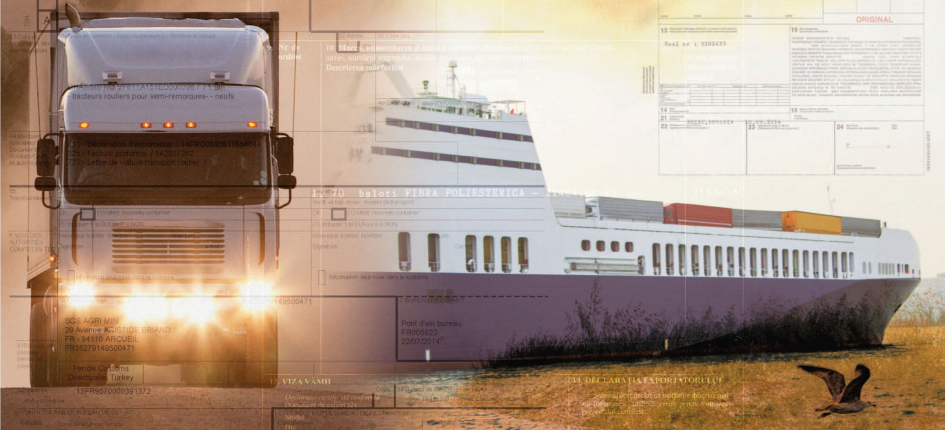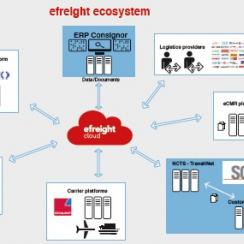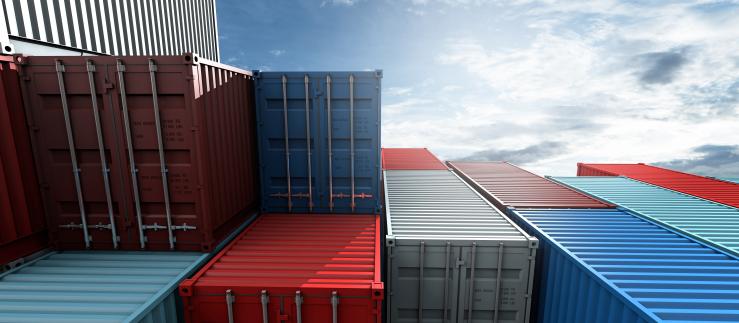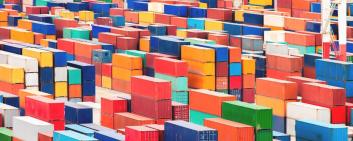"Industry 4.0" involves the comprehensive digitization of industrial production processes, which goes far beyond the linear use of robots. Instead, learning, "intelligent" machines will be used that can detect errors, take corrective action and ultimately optimize the process. "Artificial intelligence" is the name given to this ability of machines. It will, of course, take many years before we can speak of a broadly applicable technology here. Nevertheless, the development that industrial manufacturing has made over the past few decades is both impressive and fascinating.
Changes in customs clearance
At the downstream point, customs clearance, the situation is quite different. This area is still in the age of delivery notes and manual stamps. Although there are sophisticated systems for controlling the "supply chain" there as well, the formal process of crossing the border for goods is practically the same as it was 50 years ago.
Into the future with the "DaziT" goods traffic system
The pressure from the business community on the responsible authority - the Directorate General of Customs - to modernize and digitize these processes was great. It has responded by embarking on such a project based on its own findings. It is called "DaziT",and the IT solution that will be used is called "Passar". This is a unified goods traffic system that will replace all previous systems. Parliament has approved a budget of CHF 400 million for this project, and according to plans, this system will be used from September 2023 onwards.
What to do now?
It's definitely high time for companies to start preparing for this new form of customs clearance, i.e. to install an IT solution that is compatible with the Passar IT system. With "efreight cloud", a product is available that meets these requirements. This solution is a joint effort by the associations Swiss Shipper's Council, Spedlogswiss, IG Air Cargo and Netzwerk Logistik vnl. A joint-stock company of the same name has now been founded, which has the task of implementing this IT solution in the economy and also developing it further.
Efreight cloud and TransitNet
Due to the high relevance and urgency, efreight AG received the opportunity from S-GE to present "e-freight cloud" at this year's International Trade Forum as part of a "break-out session". "Efreight cloud" is an open platform that all players in the logistics chain can join or, alternatively, they can create their own interface to their own ERP system.
The platform also combines various services. In addition to the standard interfaces for the digitization (automatic reading) of delivery notes and end-to-end global communication with all service providers as well as all types of transportation, the company SGS Société Générale de Surveillance SA is also on the platform with the product TransitNet. This makes an online-based transit system (NCTS) possible. Customs clearance can be done by the shipping party itself at its own premises with TransitNet, relieving it of long waiting times at the border.
Framework agreement with the EU
In the meantime, this topic has become somewhat "explosive" with the Federal Council's recent decision to break off negotiations on the Institutional Framework Agreement with the EU (InstA). Switzerland would have remained a third country for the EU with InstA, which does of course require the cross-border control of goods. However, the business community would have liked to have seen a gradual rapprochement with the EU, by far the most important trading partner, which could possibly have resulted in a reduction of formalities in the medium to long term.
With efreight/TransitNet, the economy now has a tool at its disposal that considerably simplifies the cross-border movement of goods globally.







